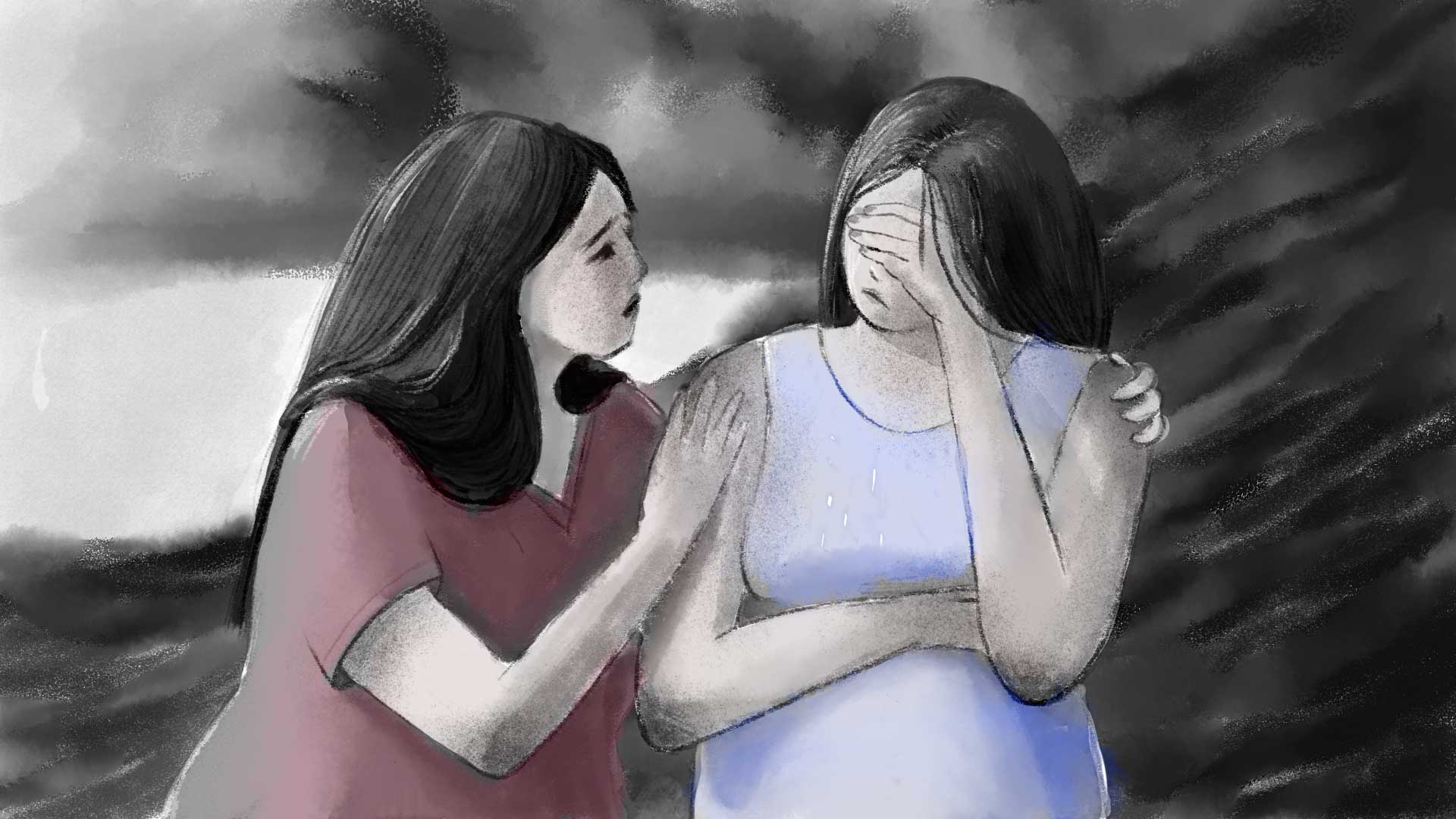


Adriana García is an obstetrician-gynecologist. When her cousin, whom she loved like a sister, told her she was expecting, Adriana was overjoyed. The pregnancy seemed to be progressing well, but when she entered her fifth month, the doctors found out that the baby was carrying several congenital anomalies. Adriana, aware of what that diagnosis meant, wished she did not know the things she knew, for they began to feel like a burden on her shoulders.
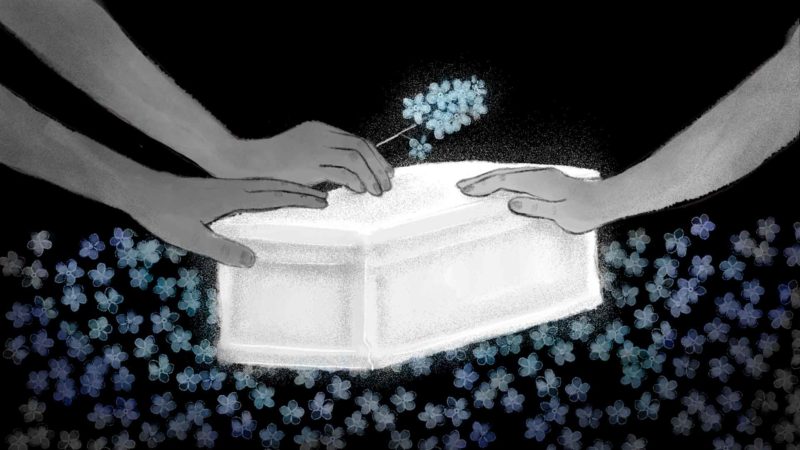
When I was little, everyone at home thought I was going to be a veterinarian. I never missed a birth of Mela, my dog. Watching her give birth to her puppies was like magic to me. However, my mother’s health —she survived a hemorrhagic stroke at 38 which was triggered by her chronic high blood pressure and left her in need of constant medical care—, drove me to study medicine: I wanted to know so I could take care of her.
In 2005, at the age of 17, I left my small hometown village of Altagracia de Orituco, Guárico, in pursue of the goals I had set for myself. I graduated from the University of Carabobo in 2011, and then went to Maracay, where I studied and successfully completed my obstetrics and gynecology specialty.
Guiding and assisting my patients is my passion, especially if they are pregnant, for I get to bear witness to the miracle of life in that little seed that grows month after month and help it into the world. But as in all branches of medicine, my specialty has its challenges and obstacles and there is a bitter side to it.
One of the most difficult situations I have had to face in obstetrics is giving a diagnosis of a congenital anomaly. Some congenital anomalies, the most serious ones, are incompatible with life outside the uterus. In those cases, the standard protocol is to suggest the mother to terminate the pregnancy; certain criteria must be met, though, including that the mother is 22 weeks (about five months) along or less. That baby, so dreamed of, so longed for, is scientifically a nonviable fetus. But it is so much more for its family… And I would later learn it myself through an experience that will be forever etched on my heart.
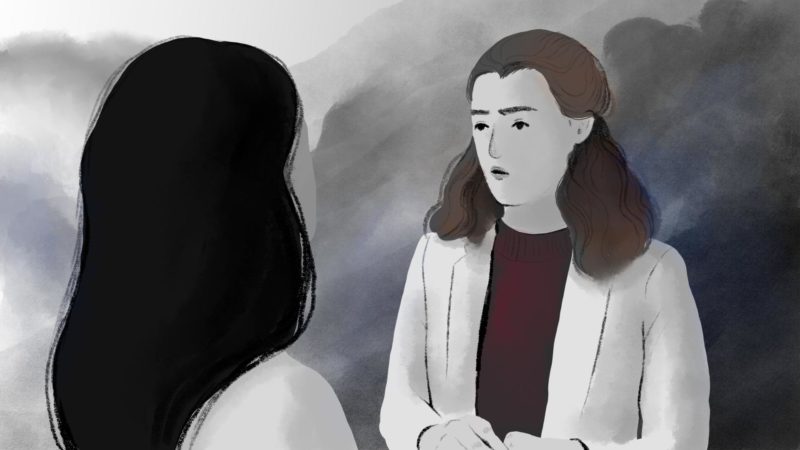
In January 2018, I was one year out of my graduate program, the same time I had been practicing at the Doctor Egor Nucete Hospital in San Carlos, Cojedes. It was then when my first cousin called me to tell me that she was late. “When was your last period?” I asked her. I did the math and told her to take a pregnancy test.
We grew up together and were born only one year apart, and although she is an only child, we consider each other sisters. We always saw each other during school vacations. When she started high school, my aunt sent her from Caracas to the small town where I lived with my parents to stay under the care and supervision of my mother, whom they called “Madame General.” My aunt said it was what was best for her future. So, we shared more than a room for five years because we went to school together. Then, after high-school, we went our separate ways: she decided to pursue studies in education in Caracas (children have always been her passion), while I moved to Valencia to study medicine.
We were always a message or a call away.
That day, she sent me the result of the pregnancy test via WhatsApp. It was positive.
“Have an ultrasound just to be on the safe side,” I told her.
She was in shock… and I was in seventh heaven!
The first week of February 2018 she sent me the photo of her first ultrasound (an eight-week embryo). It was a fact that I was going to be an aunt for the first time.
Of the four cousins our grandmother had raised, she was the first one to get pregnant, which is why the arrival of that first baby got us so thrilled. I took on knitting and sew bedding pieces for the baby and made lots of plans. We did not live in the same city, but that would not be an obstacle for me to follow the pregnancy very closely. She kept me informed of everything, from a fleeting discomfort she had, to her cravings, to that lab test or that medication she needed to take.
They told us that everything was going well with baby Amanda (her father named her Amanda after his grandmother). But during a routine visit to the ob-gyn, at the onset of her fifth month, everything changed. The doctor told her that the baby’s hand was not so clear in the ultrasound scan and that her heart was not developing normally. They sought a second opinion, and then a third. There was no doubt about it: the baby was not doing well. A bone anomaly in one of her arms was the least of her problems, for she had congenital heart, liver and digestive tract defects. They were suggested to terminate the pregnancy, and because she was close to 22 weeks, she had to make a decision quickly.
She would send me the medical reports with the diagnoses she was given. I would do my research and consult with some colleagues and perinatologists I knew. They all agreed that the prognosis was not good.
She called me as soon as she left the doctor’s office in that last visit. I could feel she was anxious and worried. I heard her cry like never before. I could feel her pain. I broke into tears too, but quietly, so as not to add to her distress, because I felt that it was my duty to comfort and support her.
Besides, she was also calling me to know my opinion as a physician.
And we doctors aren’t supposed to cry.
I knew she was holding back and trying to stay strong, but this was the first time she had allowed herself to fall apart, so I kept her company on the other end of the phone. I let her pour her heart out and waited for her to calm down. When she did, she asked me, in quick succession:
“How bad is it? What does everything the reports say mean? What now? What should I do?”
As a medical doctor, I knew that terminating the pregnancy was an option. I also knew that one of the major risks she would face if she did was hemorrhaging, which got me quite concerned because she is A rH negative, a type of blood that is very difficult to find given the current conditions of the country’s healthcare facilities where even the most common blood type is in short supply. I have also seen how painful the process is both physically and emotionally. And it was our baby girl’s life. Who were we to decide?
As her cousin, I didn’t want to see her go through such an ordeal. She would writhe in pain from the effects of the drugs she would be given to expel her preemie from her body, and the baby would immediately die.
On the other hand, I was scared that if she decided to carry the pregnancy to term she might develop conditions such as preeclampsia or gestational diabetes, or that the baby would die in her womb or that they both could die at delivery.
All the possible scenarios, all the similar cases I had seen and treated during my practice of the medical profession, which I love so much, came to me, one after another, like Catatumbo lightning, banging on my mind and my heart.
And it was at that moment that I wished I didn’t know the things I knew, that I didn’t have that knowledge, because it was too heavy a load to carry on my shoulders.
I remember crying a lot. I still cry as I write this. I hurt for my cousin’s pain. I cried for her and I cried for her baby, my niece, who would have to undergo many surgeries that would not necessarily be a guarantee of a healthy life.
I gave her my opinion and told her to listen to her heart.
She decided to carry the pregnancy to term.
Plans now revolved around the surgeries the baby was to have at birth.
The ninth month arrived under a cloud of doubt.
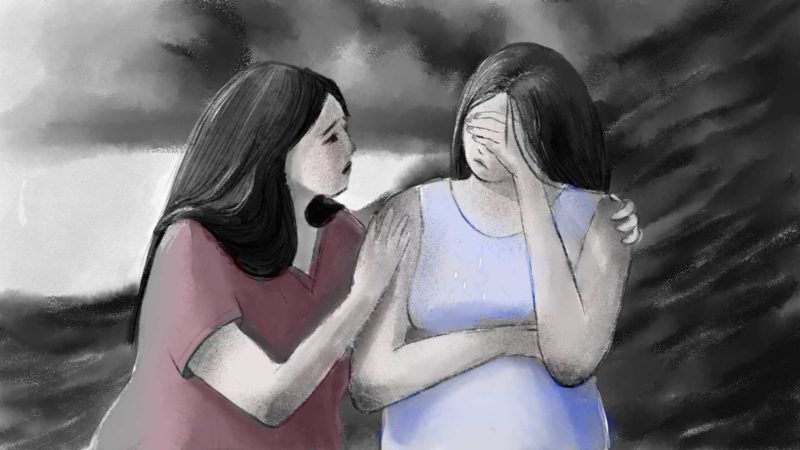
My cousin asked me to be with her and I did not give it a second thought. I put my life on hold and moved to Caracas. The medical procedures were not covered by the insurance policy she had, and it was an amount of money that we simply did not have. We decided to try at the Miguel Pérez Carreño Hospital, which was the one we were recommended the most because it had a neonatal intensive care unit and, from my professional experience, it was far more convenient that she had the baby there. We would go to the hospital every single day, only to get the same answer: “Come by again tomorrow. We have no place available for you today.”
On a Friday, she was ordered to rest and was instructed to come back on Monday.
On Sunday, September 9, 2018, at the break of dawn, my cousin woke me up. “I’ve been feeling some discomfort for a while and it’s getting stronger,” she told me. I examined her. She was five centimeters dilated. We packed up her things and left for the hospital. The drive there took forever and she was having persistent contractions. When we arrived, only she was allowed access to the premises; everyone, including me, had to wait outside.
And we knew no more.
A while later, while in the waiting area, I heard someone ask for us. They finally let me in. I arrived at the OB-GYN emergency room and was cleared to see my cousin. She was sitting in a wheelchair, wearing a blue gown and a protective cap and shoe covers. She was just coming out of the operating room. They asked me to help her get dressed and told us they could not take her in because they had no room for the baby in the NICU and the anesthesiologist was not going to put my cousin under anesthesia for a C-section if there was no neonatologist to receive the baby.
My mind was buzzing with questions.
Where else can we take her? Where are we going to find room for her if all the hospitals with a neonatal intensive care are full to capacity?
I asked the only one the resident could answer at that moment:
“How many centimeters dilated is she?”
“Eight centimeters,” she answered dispirited.
That meant that in about three hours she would reach what in obstetrics we know as full dilation, that is, 10 centimeters. Preoccupied, I heard the resident from afar say: “For the record, it is not our service’s decision not to proceed with the cesarean section”.
“I understand,” I told her, “I am an ob-gyn; if it all came down to a C-section, I would operate on her at the hospital where I work.
“And where is it that you work?”
“In San Carlos, Cojedes,” I replied matter-of-factly.
“My parents are ob-gyns and they work there too,” she said, intrigued.
Without telling me their names, I already knew who they were. I had had the opportunity to meet them and talk to them. They were kind people whose ample experience in the field had earned them recognition in the service. I remember one day, during a conversation while on the operating room, they told me that one of their daughters was specializing in obstetrics and gynecology, just like them, and that she was a graduate resident in Caracas.
Was it a coincidence? A miracle? The circumstances?
And there we were. I looked at her, hopeful.
“Wait for me here, please; I am going to escalate the case to the hospital’s management this time.”
My cousin was performed the C-section. Amanda was born and, although there was no place available, she was admitted to the Neonatal Intensive Care Unit. I put on my gown, sneaked through the corridors, arrived at the NICU and was allowed to see her. I took a close look at her: she was a beautiful glowing baby.
I remember that the people in that unit were not that courteous. “You are the medical relative,” they told me, rather sarcastically, which clearly showed they were annoyed because they had been forced to admit a new patient. And I really got them, because as a physician I had been there.
Only this time I was on the other side.
I went to the delivery room. My cousin was still there. Eight hours had passed and there was still no bed available in the hospitalization area of the maternity ward. Apparently, beds were negotiated by the orderlies. The resident, who was already familiar with my face, lent me a coverall and let me in. My cousin was on a gurney in one corner. She was still wearing her gown, cap and boot covers. She got emotional when she saw me. I signaled her not to speak, gave her a suppository for the pain, and helped her eat some soup that a friend had made for her. I also helped her change. I showed her a picture of the baby. She showed me others she had asked a medical student to take the moment the baby would be born.
Then I left, full of gratitude, and with a feeling of satisfaction for my choice of profession that I had never experienced.
There were no specialists at the center to treat the pathologies the baby had. Finding one that could was not an easy task, but then I ran into a college friend of mine at the cafeteria. We had studied medicine together in Valencia a little over a decade ago, and we had not seen each other since. He was pursuing a graduate program in cardiovascular surgery at another hospital and was doing an internship there. I talked to him about our case and he promised to discuss it with the specialist in his department.
The following day, Amanda got to be evaluated by the cardiovascular surgeon and then by a pediatric surgeon and a pediatric cardiologist who visited from other healthcare centers for consultations. Her name was added to a surgery list and, just three days after birth, Amanda was being operated on her esophagus, which was closed and did not connect to the stomach. Her condition deteriorated while in the operating room, but she came out stable and, by the end of the day, they let us see her. I was shocked by how she had changed. She looked weak, her skin was gray, and she was pallid. I knew things were not working out well, but I kept my mouth shut not to distress my cousin, and we went home.
I was worried that, only three days after the C-section, my cousin had had no rest. I had taken her out of the hospital the day before on my own responsibility. She was occupying a bed and the only treatment she had been prescribed was antibiotics and painkillers, which we had already bought for her. I also feared for postpartum depression (which is very common, especially with the stress and changes in hormone levels that make women more vulnerable at that stage); but there she was, strong, resilient, driven by that force of love that was her daughter.
The next morning, as we were getting ready to go to the hospital, my cousin got a call. She was told that Amanda had gone into cardiorespiratory arrest and that she had passed away.
“She’s an angel now,” she said.
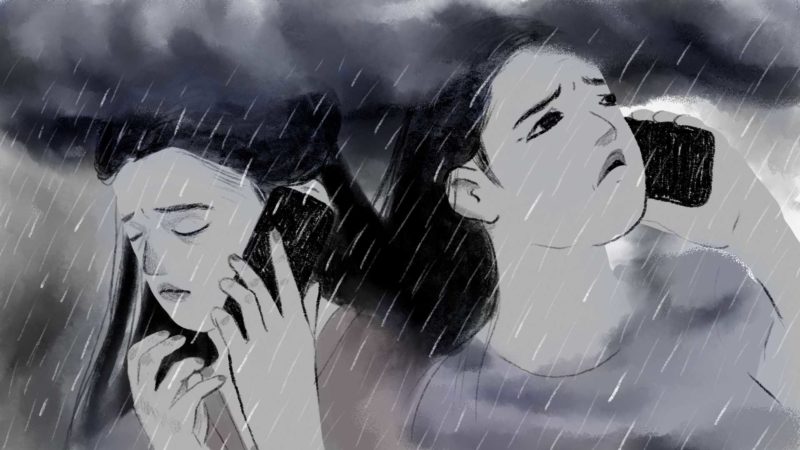
We hugged, we cried and then went to the hospital. They gave us a very brief medical explanation. We were handed over the baby’s things and we went straight to the morgue.
Amanda’s parents wanted to see her and I went with them.
We saw her: she was a tiny, pale, cute baby. Her mother took her in her arms for the first and only time. I helped them dress her and we left her swaddled in her little blanket.
She was baptized at her funeral ceremony. I got to be her godmother.
And then she was cremated.
Today her ashes are fluttering in El Ávila.
My cousin fell into a deep depression. I stood by her from the other end of the line, listening to her as she poured her heart out. Sometimes she would cry. Her life was now meaningless. Her driving force had been cut. She missed that little girl that had kept her company from inside her womb for nine months. Now not only was she staring at an empty cradle: she was feeling as empty inside, and very lonely.
But little by little she got better. With months’ worth of therapy, support and love, she found herself again.
One day she told me: “My daughter was a fighter. So, I am going to fight too. I may not see her, but I know she is here with me.”
We now honor and remember Amanda as an angel and an inspiration, as we honor and remember her short-lived but strong presence in our lives, filled with so much love. Her soul was no match for such a frail body. Now she is free and eternal.
That tiny baby girl taught me that, although life can sometimes be very brief and might not always have the ending we expect, it abounds in small miracles. I now see my cousin in each of my pregnant patients. I know how important a baby can be to a family.
That is what Amanda taught me.
 This story was written within the framework of the “Narrative Medicine: Our Bodies also Have Stories to Tell” course taught to healthcare professionals via our El Aula e-nos online training platform.
This story was written within the framework of the “Narrative Medicine: Our Bodies also Have Stories to Tell” course taught to healthcare professionals via our El Aula e-nos online training platform.
495 readings
I am a Venezuelan medical doctor practicing in a country fraught with challenges. My patients are always sharing part of their stories with me. I listen to them intently. That´s the first step to making them feel better.